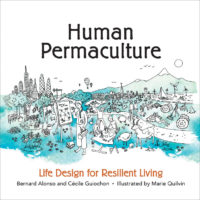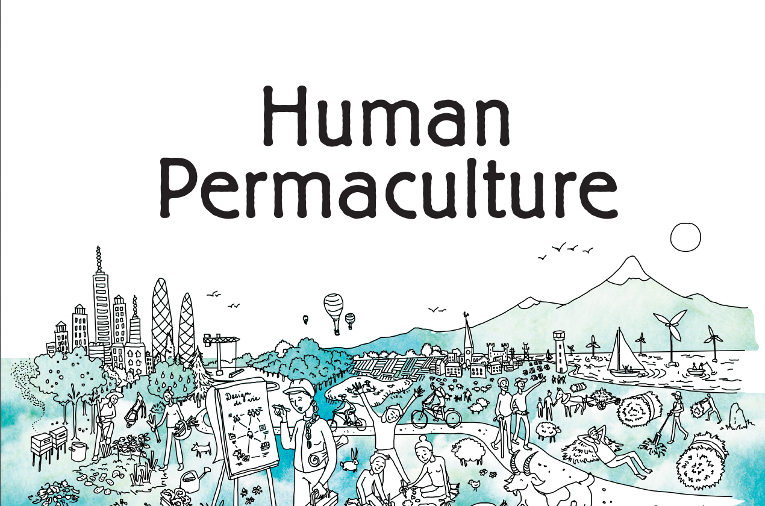 Ed. note: This post is an excerpt from Human Permaculture: Life Design for Resilient Living by Bernard Alonso, Cécile Guiochon, Scott Irving and Marie Quilvan, published by New Society Publishers, and posted here with permission. You can find out more about the book and order a copy here.
Ed. note: This post is an excerpt from Human Permaculture: Life Design for Resilient Living by Bernard Alonso, Cécile Guiochon, Scott Irving and Marie Quilvan, published by New Society Publishers, and posted here with permission. You can find out more about the book and order a copy here.
Human Permaculture as a Response to this Delicate Period of Transition
To rise to the challenge and help build the newly emerging world, the field of human permaculture proposes an innovative, holistic, creative, and interactive approach. It maps the foundations of classic permaculture — a concept born over four decades ago — onto human pursuits.
Permaculture, the natural practice of agriculture defined by Australians Bill Mollison and David Holmgren, has seen burgeoning success throughout the world in recent decades. Permaculture training opportunities are widespread and festivals are thriving, attracting masses of youth, not to mention adults of all ages, looking to delve into this approach. Yet the human-focused dimension of the discipline remains much less well known — and the time has come to fill this gap!
The originality of the “human permaculture” approach is considering the discipline in its broadest scope. It’s about building (or rebuilding) human ecosystems using the models provided by nature: generating more interactions between people rather than having everyone working solo in urban silos, producing more energy than we consume, and opting for simple tools over high-tech solutions — they are so much easier to maintain and repair, after all!
This approach is in keeping with the aims of the growing number of people who want to work together to design solutions in the face of current and future uncertainty.
Building the Change Rather than Enduring it
Because we know that “another world is possible,” because we are helping build it around us, we are writing this book to offer readers the chance to master the keys to human permaculture (Part 1).
Through a design process (Part 2), we invite readers to ask the right questions in order to find appropriate responses for their specific situations, rather than defaulting to ready-made solutions.
This book invites readers to reconcile with nature (on which we are totally reliant given that we form an integral part of it), to discover or rediscover the ways in which they are vitally linked to the water, the soil, and the forest (Part 3), and to “permacultivate” their food in a way that’s in line with today’s issues (Part 4).
This book gives informed readers the tools they will need for the transition. Each reader can adapt these tools to suit their own pace and their own preferences, and for whatever situation — be it their family, neighborhood, school, business, and so on. Armed with an understanding of the global issues connected to their everyday actions, and inspired by pioneers and examples of workable alternatives, readers will be equipped to design their daily lives. They will be able to reorganize their activities sustainably and harmoniously to create viable and fertile ecosystems around them, freely and fully consciously. Most will likely have to work to overcome the inevitable “resistance to change.” But overcoming these sticking points is easier when one can see how others have made the leap and landed on their feet!
Enthusiastic permaculturists may gather new perspectives and be tempted to bore their friends and family with tedious exhortations. But remember, our only power resides in changing ourselves.
There is no point in trying to change others! The example we set will either give people the urge to commit to undergoing a transformation in their own time, or it won’t. Such choices are strictly personal — though extremely contagious!





